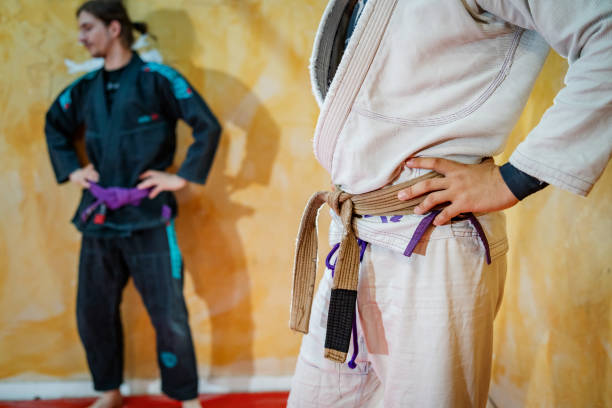Comprehending the proper method of wrapping your hands is imperative for boxing readiness. It’s meant not just to protect your knuckles, but also to prevent potential harm to the numerous small bones and joints that comprise your hands.
If your hands are wrapped properly it will protect them from fractures and provides essential support to areas including your wrists and fingers. They are not to cushion from blows as the gloves do that for you.
It’s important for your hands to be tight when boxing. If you punch with a loose hand, you could break some of your hand joints and end up with hand injuries that could be potentially disabling permanently.
Hand wraps also have the added bonus of soaking up the sweat, helping to keep that nastiness away from the inside of your gloves, as long as you keep them regularly washed and fresh.
So just how do you wrap your hands correctly? Here is a step-by-step guide:
Buy yourself a set of hand wraps which are the right size for your hands. Don’t go for glove-style wraps or thick wraps which don’t stretch as these don’t offer the amount of support you will need.

Step 1.
Loop around your thumb and then wrap it behind your hand. It’s important to take the wrap down the back of your hand because that way it will tighten up if you ball your hand into a fist. If you do it down the front, it becomes looser when you curl your hand.
Step 2.
Next, wrap it around your wrist three times to provide support for the delicate wrist bones. If you have big wrists or prefer more flexibility then you can cut this down to two wraps.
Step 3.
Next, you need to take the wrap around your hand three times. You should be wrapping the palm at this stage rather than taking it over your knuckles. Once completed, take it down to the back side of your thumb.
Step 4.
Now it’s time to create three crosses through your fingers. You need to cross the wrap on the back of your hand and then between your fingers. The aim of this shape is to provide support for your knuckles to avoid breaking them. Here is how you do it:
Pass the wrap between your smallest finger and your ring finger, and then take it to one side to create the first half of your cross. Then take it to the end of your hand and it will form the cross on your hand back.
Take it back to your thumb and then pass it between your ring finger and middle finger this time to create the second cross. Take it back to your thumb and then make the third cross by looping the wrap between your middle and index fingers. You will finish at your thumb.
Step 5.
Take the wrap once around your thumb and then down the back side of your hand for this step.
Step 6.
Take the wrap behind your thumb and this time; take it right down the inside of your palm. This step helps to secure your thumb joints and also keeps the wrap secure and unable to move.
Step 7.
This step involves securing your knuckles, so take the wrap three times around your knuckles, ready to finish off.
Step 8.
If there is any length left, you can create some more crosses but make sure your hands can still fit inside your gloves comfortably. You need to finish your wrap at the wrist and secure it with the Velcro to stop it from coming undone.
Make sure you can bend your wrist and that you are able to close your hand and make a fist, at which point the wrap should become tighter. Your hand should be relaxed when it’s not balled up and it shouldn’t be so tight that you are in pain or losing sensation in your fingers.
Conclusion
Your personal boxing style and fighting experience will largely dictate how tightly or loosely you like to wrap your wrists. Some like them wrapped tightly for powerful punching, others prefer them looser for a lot more flexibility of movement.
With practice you will soon get the hang of wrapping your hands every time you are preparing to fight or train and getting the tension and tightness right will become second nature very quickly. It becomes part of the ritual of preparing yourself for a bout or a training session.
As long as you keep your wraps looked after and regularly washed and cleaned you will help to protect your boxing gloves against becoming unpleasant and smelly as well. Remember to throw away worn-out wraps and replace them.





